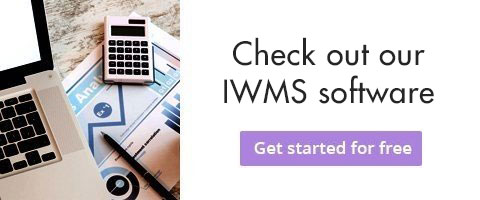Integrated workplace management systems can help companies reach goals


Although some individuals may not understand what integrated workplace management systems are because of their complex acronym – IWMS – most will find it easy to fathom their results, according to intelligent workplace management resource IWMS News. Businesses that invest in these tools can identify ways to improve their overall productivity by taking the entire organization into consideration through a single technology platform, rather than tackling issues in a disjointed manner – one at a time – as though they were unrelated.

This can help businesses that operate multiple facilities get real-time insight and manage their locations no matter how far away they are. In today’s increasingly global economy, enterprises are becoming decentralized, the source adds. C-level executives and staff members alike can travel for work without getting behind on their tasks thanks to mobile technology and web-based connectivity. IWMS provides facilities managers with the same capabilities because the platforms are internet-based, allowing them to remotely monitor locations regardless of proximity. They are also beneficial to single-unit organizations that want to gain more control over processes so every element can be streamlined for maximum efficiency.
IWMS software offers holistic approach
Companies benefit when their facilities managers have greater oversight that allows them to optimize operations with IWMS solutions. These programs help companies make their facilities more efficient through move management, inventory tracking, asset management, service request monitoring and real estate management.
1. Move management
In a highly competitive marketplace, companies must be agile. This requires businesses to be able to change on the fly, creating space for new hires and moving assets for projects’ start dates without hiccups that could cost their firms time and money. As part of IWMS solutions, move management software gives companies the ability to anticipate upcoming changes and plan ahead on shared platforms so no resources go to waste and alterations go off without a hitch.
2. Inventory tracking
Facility managers are also challenged to track inventory, including both the physical items such as desk chairs, computers and printers and the inherent value of these items, including their costs, value and descriptions.
Inventory tracking programs might become even more essential to businesses as their workforces become increasingly mobile. Facilities managers may need to ensure employees coming to the office on any given day will have desks and the proper supplies available, but also need to redistribute these supplies when those individuals are out of the office so they are not going unused.
3. Asset management
As company assets grow, shrink or move, facilities managers must be able to account for and locate every printer, speaker and cooling tower. Keeping up-to-the-minute records of these wide-ranging items can become difficult if businesses use disjointed systems, such as retaining master lists on spreadsheets, communicating through emails and updating asset management programs separately. Using a unified program instead can help companies ensure all of their assets are accounted for so they can disburse them when needed, as soon as they are requested.
4. Monitor service requests
If companies want to run like well-oiled machines, facilities managers need to have complete oversight of service requests and facility maintenance issues. New technology provides companies with more efficient ways to respond to complaints rather than losing track of important maintenance concerns in a long paper trail. Gaining additional perspective of service requests can also help businesses anticipate problems and authorize preventative maintenance to avoid downtime and costly retroactive repairs.
5. Real estate management
Space is one of companies’ most important assets, but it can easily go to waste if facilities managers don’t have a complete grasp on how much square footage they actually have, whether it’s occupied or empty and how it’s being used. Space management software can be updated with information in real-time so all stakeholders can manage real estate across facilities.
Many companies find that in order to compete in today’s economy, they need to do more with less. That means streamlining processes for greater productivity and also eliminating inefficient use of assets or space. IWMS software can help companies gain the deep insight they need to manage and improve operations to gain an edge over others in their markets.
IWMS software allows organizations to manage many aspects of the workplace through a single platform. They can manage space, streamline office moves, keep track of their assets and manage service requests, among other things.
And when IWMS software is integrated with workplace apps through an interface like iOFFICE Hummingbird, there is a closed loop between employees and workplace managers. Employees can find people and spaces, reserve rooms, request service and receive visitors and mail no matter where they’re working. And workplace leaders have real-time visibility into how employees are actually using the space, so they can make more informed decisions about how to allocate spaces and assets. This makes employees and workplace leaders more productive while reducing costs, improving security and compliance.
There’s no denying the incredible impact that technology has had on the traditional workplace. It’s up to workplace leaders to keep up with this ever-evolving trend in the most efficient way possible.

